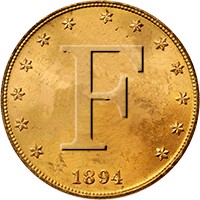A
Anonymous
Guest
Here in the UK I tried an experiment with ferrous sounds on my XS. Most people here search on ploughed land for hammered silver coins, some of which are quite small.I usualy search in iron mask 14 when conditions allow, with conductive sounds.
After reading that you folks in the US of A use ferrouse sounds to search for silver I decided to try it.
I searched in my usual mode , but when I got a signal in conductive that I thought could be a hammered coin, I put it into ferrous tones and gave it a try.
I found that if a target was deep, in ferrous sounds, it would give a low tone signal that was very close to that of an iron target, and very easily overlooked. I am not talking of fringe targets but very clear two way signals.
I am now convinced that if it's silver you want,
use conductive sounds. The very high tones are iron,with the crosshair going top left on the screen, tinfoil gives a "good" low tone signal, with the crosshair at the very bottom of the screen and is easily identified. Anything between "DIG"
I wonder if our freinds on that side of the Atlantic are missing deep, fringe coins, by using ferrous tones ??????
Nick (UK)
After reading that you folks in the US of A use ferrouse sounds to search for silver I decided to try it.
I searched in my usual mode , but when I got a signal in conductive that I thought could be a hammered coin, I put it into ferrous tones and gave it a try.
I found that if a target was deep, in ferrous sounds, it would give a low tone signal that was very close to that of an iron target, and very easily overlooked. I am not talking of fringe targets but very clear two way signals.
I am now convinced that if it's silver you want,
use conductive sounds. The very high tones are iron,with the crosshair going top left on the screen, tinfoil gives a "good" low tone signal, with the crosshair at the very bottom of the screen and is easily identified. Anything between "DIG"
I wonder if our freinds on that side of the Atlantic are missing deep, fringe coins, by using ferrous tones ??????
Nick (UK)
